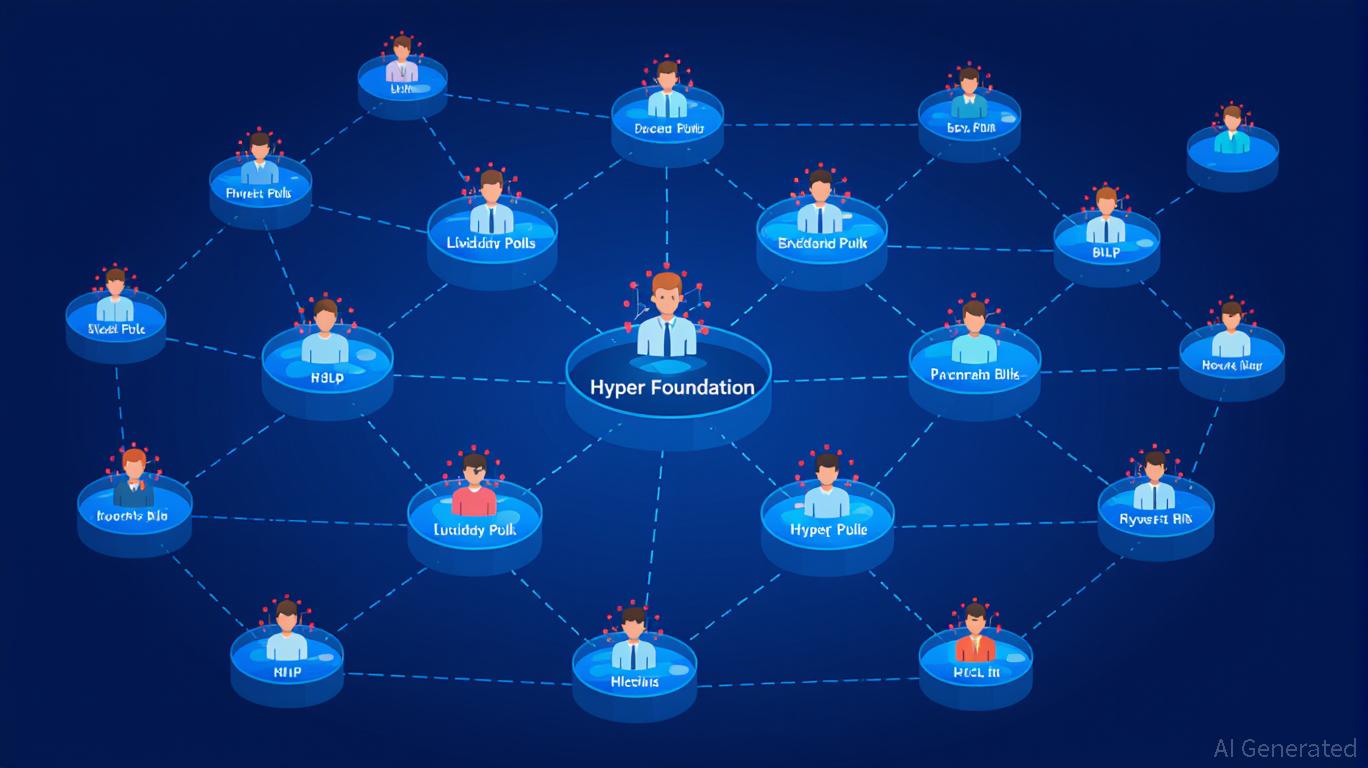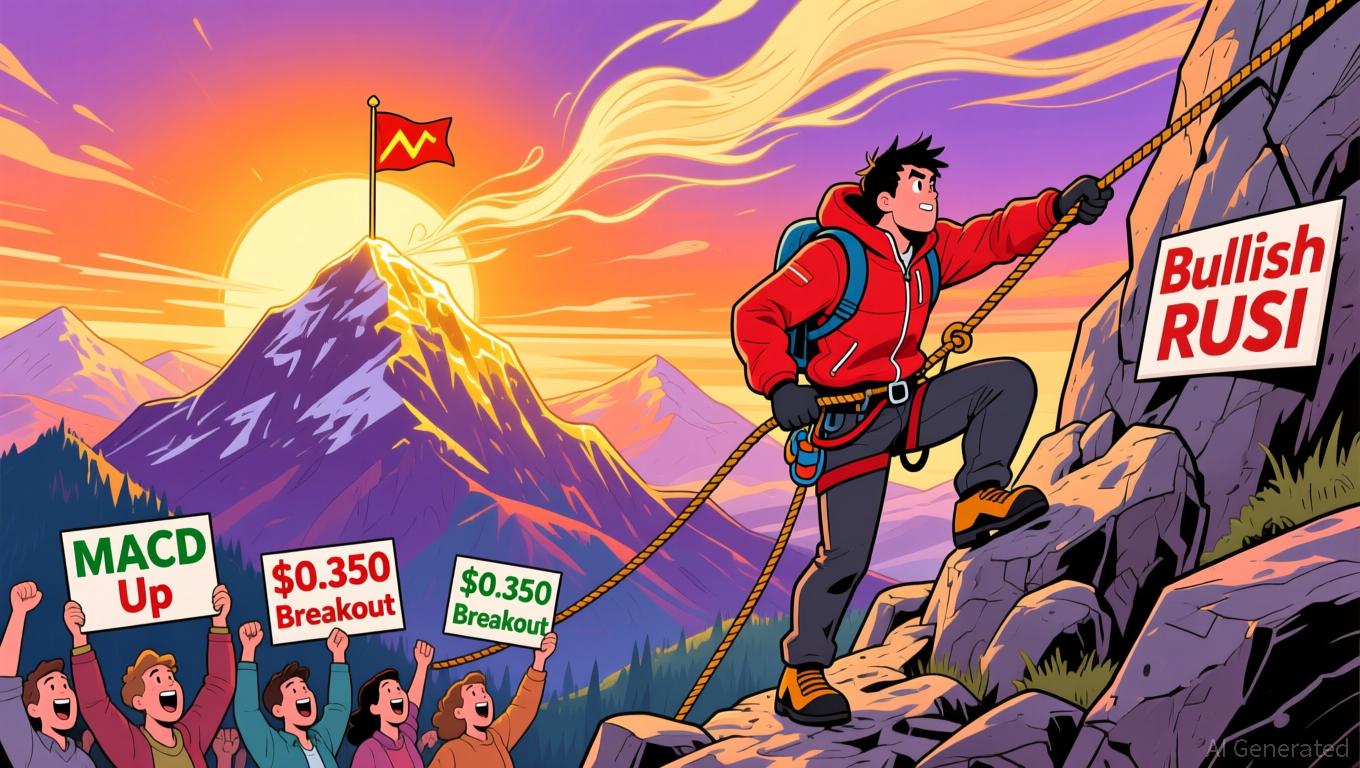Hyperliquid's Growing Influence in Crypto Trading: Can It Maintain Long-Term Investment Appeal?
- Hyperliquid dominates 80% of 2025 perpetual contract market via on-chain governance and user-driven liquidity innovations. - Centralized governance (HIP-3 protocol, USDH stablecoin launch) balances permissionless market creation with validator dominance risks. - HLP liquidity model generates $40M during crashes but faces regulatory scrutiny and token economics challenges from 2025 HYPE unlock. - TVL growth to $5B and 518K active addresses highlight adoption, yet governance centralization and institutiona
Centralized Governance and Open Innovation
Hyperliquid’s on-chain governance structure presents both opportunities and challenges. The platform operates with 24 validators, and the
A major milestone in 2025 was the USDH stablecoin introduction, which was approved through a governance vote that favored Native Markets over alternatives like Paxos and Frax, as reported by LiveBitcoinNews. Although this step lessens dependence on

User-Powered Liquidity: Strengths and Weaknesses
Hyperliquid’s liquidity framework is anchored by the Hyperliquidity Provider (HLP) vault, which aggregates user deposits to ensure constant counterparties. During a $10 billion market downturn, the HLP generated $40 million in returns, as cited by Coinotag. Additionally, the Borrow Lending Protocol (BLP) testnet allows for on-chain borrowing of assets like USDC and PURR to help manage leveraged trading risk, as reported by Bitget. These features position Hyperliquid as a bridge between centralized and decentralized finance, offering both speed and liquidity while maintaining user control.
However, the system’s dependence on HYPE token staking for launching new markets introduces certain vulnerabilities. For instance, the AERO/USDC perpetual contract, which debuted with 3x leverage, highlights Hyperliquid’s appeal to active traders but also its exposure to asset volatility, as observed by Lookonchain. Regulatory pressures add another layer of complexity, especially as rivals like BlockchainFX obtain institutional licenses, according to Cryptopolitan. Despite regulatory uncertainty, user engagement remains strong: total value locked (TVL) soared from $564 million at the end of 2024 to $5 billion by the close of 2025, according to Oak Research. Active wallet addresses also increased by 78%, reaching 518,000, per Oak Research’s data.
Sustainability: Navigating Growth and Control
The future success of Hyperliquid depends on its ability to balance centralized oversight with decentralized participation. The introduction of the HIP-3 protocol and HyperEVM (an Ethereum-compatible execution environment), as detailed in CoinMarketCap’s recent update, improves both composability and scalability, though validator concentration remains a concern. Growing institutional interest—such as 21Shares’ application for a HYPE ETF, as reported by Bitget—reflects confidence in the platform’s potential. However, price instability and leadership transitions (for example, CEO Michael Rowe stepping down) could impact investor confidence, as noted in Bitget’s coverage.
Clearer regulatory guidelines are also essential. The Jelly incident, which involved a $12 million loss from the HLP that was offset by an oracle intervention, as reported by Oak Research, highlighted the importance of strong security protocols. Hyperliquid’s buyback initiative, which uses 97% of protocol fees as per CoinMarketCap, creates deflationary pressure, but broader economic challenges and competition from centralized exchanges could threaten its market position.
Conclusion: High Risk, High Potential
Hyperliquid’s advancements in governance and liquidity have made it a frontrunner in decentralized trading. The platform’s rapid TVL growth, expanding user base, and strategic alliances (such as with Felix), as reported by Bitget, point to solid fundamentals. Still, its centralized decision-making, upcoming token unlock, and regulatory ambiguity present notable risks. For investors, Hyperliquid offers a high-risk, potentially high-reward scenario: its open market creation and HLP system could fuel ongoing expansion, but underlying structural issues warrant a cautious approach.
Disclaimer: The content of this article solely reflects the author's opinion and does not represent the platform in any capacity. This article is not intended to serve as a reference for making investment decisions.
You may also like
Starknet Faces a Pivotal Moment: Will the Rally Continue or Will the Downtrend Resume?
- Starknet (STRK) broke a 623-day resistance, signaling a potential bullish reversal with RSI/MACD support. - Traders eye $0.350 as a key target, with a successful breakout confirming an upward trend or triggering bearish pressure. - Analysts highlight risks, noting a breakdown below $0.11 could reignite the downtrend toward $0.065.

Marriott’s Departure from Sonder Underscores Challenges in Technology-Based Hospitality Collaborations
- Marriott abruptly terminated its licensing agreement with Sonder , leaving thousands of guests stranded and canceling over 9,000 properties from its booking platforms. - The move slashed Marriott's 2025 growth forecast to 4.5% as Sonder filed Chapter 7 bankruptcy due to integration costs and revenue decline linked to the partnership. - Guests faced refund reversals and accusations of corporate negligence, while critics highlighted inconsistent crisis management and risks of overreliance on short-term ren
Oil Consumption Expected to Increase Until 2050: Growth Driven by AI, Transportation, and Petrochemical Industries
- IEA revises energy outlook, projecting oil demand to reach 113M bpd by 2050 due to AI, transport, and petrochemicals. - Brazil, Guyana, and Argentina will lead 60% of new oil capacity through 2030, offsetting slower U.S. shale growth. - India's energy demand will surge 15 exajoules by 2035, driven by urbanization and 50% renewable grid capacity by 2025. - Global electricity demand will rise 40% by 2035, outpacing overall energy growth but lagging climate transition progress.
Epstein Files Stalemate: Political Divide Over Facts Deepens
- White House accuses House Democrats of weaponizing Epstein emails to smear Trump, escalating a long-standing battle over "Epstein files." - Released emails suggest Epstein believed Trump knew about his sex-trafficking activities, though Trump denies all allegations as a "hoax." - Bipartisan push for full DOJ file disclosure stalls amid Trump's obstruction, with critics highlighting unreleased documents and political gridlock. - Epstein's associate Maxwell's transfer to minimum-security prison sparks surv
